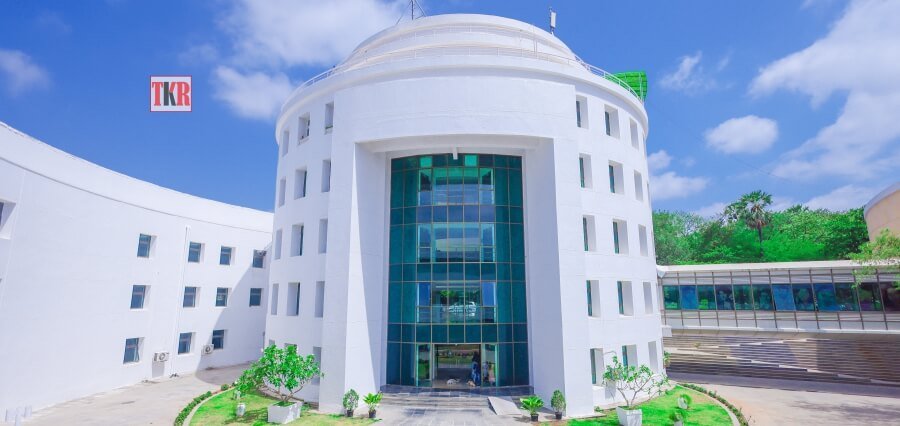Design institutes empower students with the craft of imagination and abilities of envisioning, in leaning into the future, in order to actively solve problems across a broad range of domains that require design intervention. These hubs of creative problem solving nurture the spirit of inquiry, curiosity, while harnessing available technology, in the service of peoples and communities.
Visual Communication Design is an area of design that impacts large numbers of people worldwide – in effectively meeting the user, consumer, audience needs, and enhancing the quality of life.
Whistling Woods International is a pioneering institute transforming students into inventive and expressive Visual Communication Designers, fueled by the challenges posed by rapidly changing socio-economic contexts, business processes, and technological frameworks.
Spearheaded by influential leader Milindo Taid, as the Head of the Department, the institute creates benchmarks of excellence in design education, buoyed by the cutting edge of quality of student and faculty work, in the sphere of Visual Communication Design.
This prestigious institute produces next-generation design professionals who understand the design profession’s dynamic and people-centred nature.
They understand the need based locus of design as a problem-solving activity, while being cognizant of it being a powerful force that shapes societies and cultures. Design is an ever- evolving profession striving to enhance the quality of life through interventions in the human-made environment.
The aim of this institute is to produce responsible and conscientious design professionals dedicated to bettering the lives of millions in India and globally, using the power of Visual Communication Design. Its primary focus is in the seeding of creative and innovative design solutions, with extensive applicability. Design projects are necessarily complex, with factors like viability, feasibility, total stakeholder benefit, governing the creative spirit. The Visual Communication Design students are encouraged to ‘find comfort’ in complexity and ambiguity.
The programme seeks to take into account the various contexts that are relevant to the Indian subcontinent, making sure that the curriculum is in line with the region’s more general design needs. The department works to produce designers who approach their work with diligence and dedication, as a service to people.
Cultivating Creativity
With a legacy of 17+ years, WWI stands tall as a creative educational institute, while being counted as one of the best institutes of excellence in South Asia. Its Department of Visual Communication Design stands out as a unique center where students enhance their visual design abilities and participate in unparalleled interdisciplinary collaborations within its rich and diverse academic environment.
In this unique atmosphere, the students are encouraged to integrate in and draw from the multidisciplinary milieu, that includes acting, cinema, music, among others. As a consequence of which, design students have an unparalleled, unique experience at WWI, and the subsequent interdisciplinary transference of ideas become a stimulus for creative thought and action.
Moreover, the department establishes advanced international collaborations through active exchange programs with visual design institutes in France. This global perspective enriches the learning journey, ensuring that students are not just educated but immersed in a dynamic learning ecosystem that propels them to setting global benchmarks in the quality of their work.
A Field of Challenges and Responsibilities
As the practice and profession of design is centrally situated in human- made environments and systems, the challenges faced by post-industrial and post-modern societies must be addressed by today’s designers.
The growth and spread of industrial societies, along with the spike in economic inequality and geopolitical instability on a global scale, have left behind a tangible legacy of environmental and societal degradations.
Hence, articulating the possibilities of addressing these serious problems is the next set of challenges and opportunities for design.
WWI Visual Communication Design students engage in complexity mapping from Year I of the program. Later in the program, they gain competencies in environmental perception, deep ecology, and universal design, among other areas.
Producing Industry-Ready professionals
The quality of design education is the determinant of the outcomes of the programme; WWI nurtures young minds and hearts to envision a better world. The curriculum prepares the students and makes them industry- ready by crafting classroom inputs that challenge the students to assess the close intersections of peoples, societies, businesses, and technologies. It also establishes an active interface with committed, experienced industry professionals who engage with the department as visiting faculty and project mentors.
WWI provides ample amount of opportunities for students to excel professionally. The institute believes that graduates of any professional design education program must display a very high level of professional competence, and the students do so, where many are offered full-time roles as young designers even before graduating from the programme.
The department constantly maintains the quality of education, raising the bar every time. The final semester puts the students to the test, where they have to deliver as professionals in standard industry settings. The design studio, company, or client typically offers the yet-to-graduate design students long- term employment; this is a testament to the quality and rigour of WWI’s 4-year curriculum in Visual Communication Design.
Harnessing Technology
WWI weaves the usage of technology into the curricular framework; it approaches technologies of all kinds as enablers and considers them as the means to an end, not an end in itself. The institute houses some of the most advanced tech labs from giants like Apple, Adobe, Sony Corporation, and the more nascent AR-VR research and application labs.
The students here get the opportunity to work and learn across these leading- edge labs to enhance as well as actualize their design interventions.
However, human awareness and action are the source of the creative act when it comes to the decision-making that occurs during the iterative problem- solving process in design. Here, new and emerging technologies empower students rather than enslave them.
Encouraging Extracurricular Activities
Being in the creative arena, designers need to constantly exercise their wonderment for possibilities, in learning and experiencing new things. WWI considers extracurricular activities to be a crucial factor for a wholesome and well-rounded learning journey. Accordingly, it has created opportunities for students to engage across departments and disciplines in various collaborative ways. It caters to some of the most enjoyable and wide range of extra curricular activities, from cultural to sporting ones, leadership lessons, to creative partnerships.
Due to the department’s close tie-up with the visual design institutes in France, the students also get a shot at collaborating with their French counterparts, in person, and co-learn through workshops. These intercultural and cross-cultural encounters have enormous potential and always yield beneficial results
Establishing the Best Learning Environment
The Design Strategies and Management module in the WWI Visual Communication Design programme is steered by the Head of Design at the GCPL Design Lab (Godrej Consumer Products Ltd.).
Under careful guidance at the GCPL Lab, the students gain practical experience working in the prestigious Lab.
There are no shortcuts here—real- world case studies and current industry norms and expectations guide the student’s learning process! It is not only the most live-projects learning environment but also a ticket to excellence in design, as the students get the valuable opportunity to learn from the best.
The institute promotes entrepreneurship and innovation in the design sector and helps driven designers turn their concepts into viable initiatives or enterprises.
The Sustainable Approach
Industrial societies and mass manufacturing over the last few centuries, has led to the severe degradation of the natural environment across the globe. With an ever expanding population, pressures on all limited resources, are at an all time high. Renewable energies, recyclable materials, and earth-friendly ways and practices, encapsulate the sustainable approach. WWI prioritizes this in weaving it into the curriculum.
As a consequence, the design students consider the nature of the “cycle-of- life” of all things human-made (communications, products, buildings, and systems)—from the cradle to the grave—while learning about the anatomy of these complex problems. This results in a profound awareness of conscience-driven practice among them.
The Best Professionals as Mentors
Mentors ignite ambition and determination in students, replenishing their strengths and enhancing their capabilities. An experienced and efficient mentor goes beyond her way to help a student of any professional education programme and that’s how the students acquire a solid footing in one’s creative direction and, more crucially, the confidence in identifying one’s talents and problem-solving skills.
The WWI Visual Communication Design department’s mentors and faculty are accomplished academics and professionals from the industry, having graduated from renowned schools such as the Royal College of Art (London, UK), Sir JJ School of Art and Architecture (Mumbai), National Institute of Design (Ahmedabad), and the Industrial Design Centre (IIT- Bombay).
With years of combined academic and professional experience, they bring real-world challenges to the classroom, mentor the students as they make their first steps into the industry, and stay involved even after completing the programme.
Imbibing Cultural Inspiration
The vernacular vocabulary of design makes the human-made environment of pre-industrial and agrarian communities worldwide. In South Asia, this vocabulary is ingrained in
everyday activities such as regular rites and rituals, the making of clothing, and the construction of shelter, which are all vital and relentless. India has a rich and varied history of artistic and creative expression, apart from the manifestations of practical and utilitarian requirements of the everyday.
These are a part of the general education modules at WWI, where courses on topics like “Environmental Perception” and “Art and Aesthetics” help to introduce young students to pre-industrial design language. In “Environmental Perception,” students reside in a rural environment to learn about indigenous artistic and craft practices, apart from learning about the structure of rural life and community. This is a deep dive of an outdoor, hands-on learning experience.
Positively Impacting the Design Industry
Whistling Woods International produces visual design graduates who impact the design industry positively, via the quality of their work (both process as well as outcome.) These students are not only influential for their juniors, but also bring laurels to the institute.
They have been employed by top notch companies like Godrej, Skechers, and many more, demonstrating that “good design is good business.”
A recent proud alumnus states – “Through hands-on projects, I’ve developed not just theoretical knowledge but also the essential skills demanded by the industry. Reflecting on my years here, I can confidently say that Whistling Woods International has provided me with the perfect platform to nurture my passion for visual communication design. It has been a fulfilling experience that has prepared me for a successful career in this field.”
Rising Remote Opportunities
WWI offers efficient and promising remote creative opportunities, as McLuhan’s “Global Village” actualizes in the first part of the twenty-first
century. Visual Communication Design students are working on projects from Mumbai, India, for an international audience as part of the Civic City project, which is being undertaken in collaboration with renowned Swiss- Franco Graphic Designer Ruedi Baur and his team based in Paris, France, and across Europe.
WWI incorporates these international collaborative projects into the Visual Communication Design curriculum to help students grasp the possibilities of global collaborative ventures, which frequently includes remote work.
Staying Relevant and Evolving Efficiently
This eminent design institute is determined to evolve with time and consistently deliver as a top-tier professional higher education destination. It believes that the only thing that truly sets excellent design schools apart, is quality, i.e., the student’s work process and outcome, their critical thinking agility, and their conscientious and sensitive approach, which puts the needs of people and their well-being at the center of any problem-solving process.
The WWI Visual Communication Design department aspires to be at the forefront of all quality driven professional educational programmes, and to be a destination for aspiring learners who value excellence over mediocrity. This programme aims to be globally competitive in the professional education arena.
A Word of Wisdom for Aspiring Designers
Creativity and innovative vision are gifts that need to be honed and sharpened in order for designers to present themselves as successful professionals. An efficient creator or a competent designer must be a sponge, absorbing everything that surrounds them; though design is often considered a generalist profession, the designers knowledge and techniques provide a wide range of sensibilities, which can be deployed for more “specific” applications, through design interventions that address various human needs. In the absence of empathy, teamwork, sensitivity, and curiosity, “good design” is not possible.
The complexity of South Asia in general and India in particular poses challenges to any design project – a truly multilingual, multicultural, diverse, large population located in a part of the largest continuous landmass in the world.
As Milindo Taid says, “There are design opportunities that present themselves, if we know where to look, and how to look, and in always centering people and their well-being at the heart of any design process, we can ensure that the desired end impact is met, more than well.”
So, young designers should never cease to learn, explore, and experiment, fail even, but learn all the way though. And at the forefront of this design education is Whistling Woods International, which champions innovation, industry and discovery.





